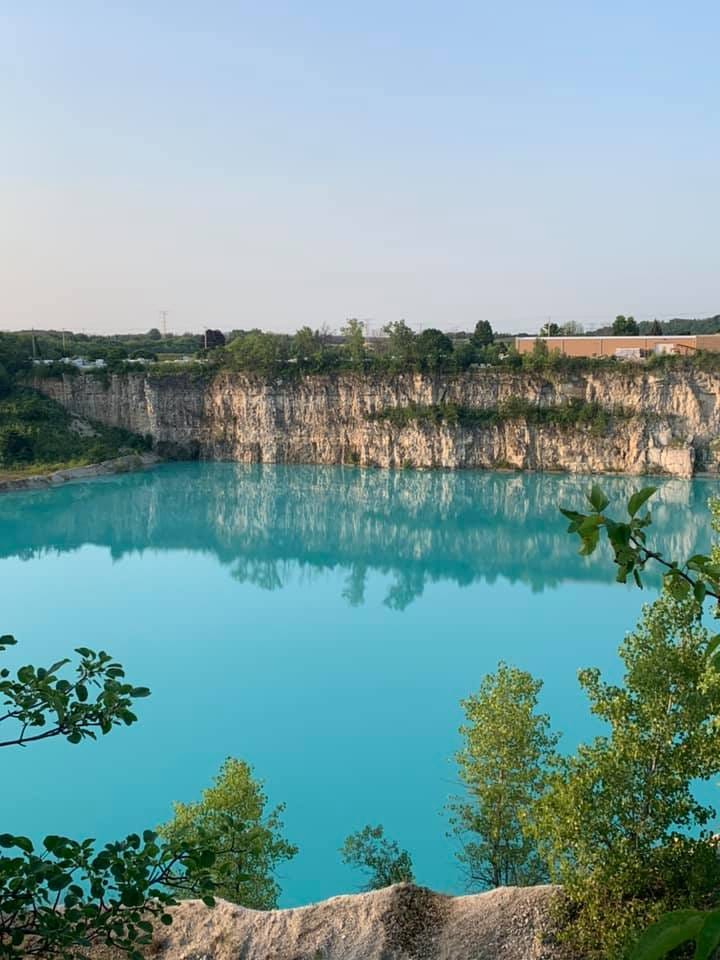Another Weird Trail Name: The Bugline
How a winding train route became one of Wisconsin’s most beloved multi-use trails
The Bugline Trail is a 15.6-mile paved trail in Waukesha County, and it is one of Wisconsin's many scenic paths established along a former train route. As America shifted away from train transport in the mid-20th century, rail corridors across the country were abandoned, leaving behind long, narrow stretches of land that still bore the marks of their railway past. Over time, as tracks were removed, people began walking along these cleared paths, leading to the birth of the rails-to-trails movement—the idea that unused or abandoned railway corridors could be repurposed into multi-use recreational trails. Wisconsin played a pioneering role in this effort, with the Elroy-Sparta Trail becoming one of the nation's first rail-trail conversions in the 1960s. Today, the state boasts over 100 former railway corridors that have been transformed into trails, providing countless miles for cycling, running, and hiking.
But why the name Bugline?
The story of the Bugline Trail begins in 1890, when the Milwaukee, Menomonee Falls, and Western Railroad established a rail line to support the booming limestone quarry industry in the region. The quarries, which remain a prominent feature of the landscape today, were essential to construction and industry, and the rail line transported massive quantities of quarried stone. Over the years, the line expanded its services, carrying freight for feed mills, creameries, and canning operations. It also provided passenger service, ferrying workers, families, and even students commuting to school. The train became an integral part of daily life in the communities it passed through.
According to local historians, the unusual name "Bugline" originated from a passenger’s offhand remark. Upon riding the winding train route through the countryside, they reportedly observed, "This is just like a bug following a grapevine." The description captured the imagination of locals, and the name stuck.
Rail service on the Bugline was discontinued in 1978 as rail transportation declined and trucking became the dominant mode of freight transport. Waukesha County quickly recognized the potential of the right-of-way and acquired the land for trail use in 1979. However, early plans called for the path to be named the rather uninspiring "Waukesha Lineal Trail." Fortunately, more creative minds prevailed, and the beloved "Bugline" name was carried over from the railway to the new recreational trail.
The Bugline Trail officially opened in 1985 as a 10.5-mile crushed limestone path, offering a scenic and peaceful route for outdoor enthusiasts. Over the years, the trail was extended and, eventually, fully paved, making it more accessible to cyclists, runners, and families out for a stroll. The modern-day Bugline Trail winds through picturesque woods, past lakes and wetlands, and alongside the deep limestone quarries that once necessitated the rail line’s very existence. The juxtaposition of nature and industry remains evident along the route—massive quarries still operate near Lannon, while peaceful wooded sections provide a quiet escape from nearby towns.
Photo: A quarry along the Bugline Trail.
Today, the Bugline Trail is a beloved recreational corridor, popular with cyclists, runners, and walkers year-round. It serves as both a fitness path and a connection to the area’s rich industrial past. Whether you’re looking for a long, smooth bike ride, a leisurely stroll, or a run with a view of dramatic quarry cliffs, the Bugline offers a bit of everything. And for those who appreciate the quirky histories behind Wisconsin’s trails, the Bugline remains a testament to the enduring legacy of the railroads—and the stories they left behind.
Like what you’ve read? Please subscribe and check out my other deep dives into the origins of some of our most oddly named public spaces.



10.5 miles of crushed limestone….wow! That stuff is $50 per cubic yard. What a fantastic trail surface for this type of trail!
I love when communities convert abandoned railheads into recreational paths.......an excellent use of land.